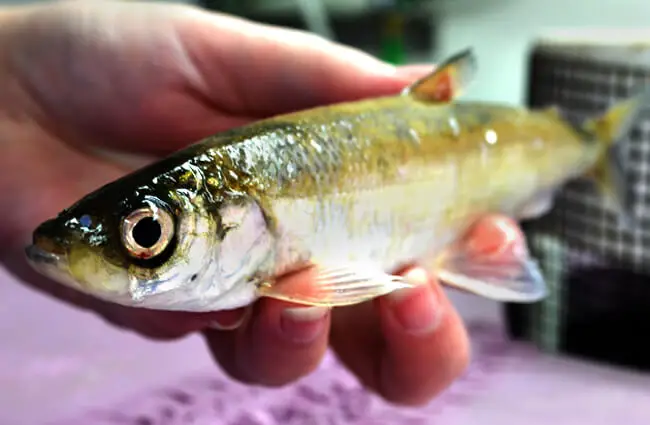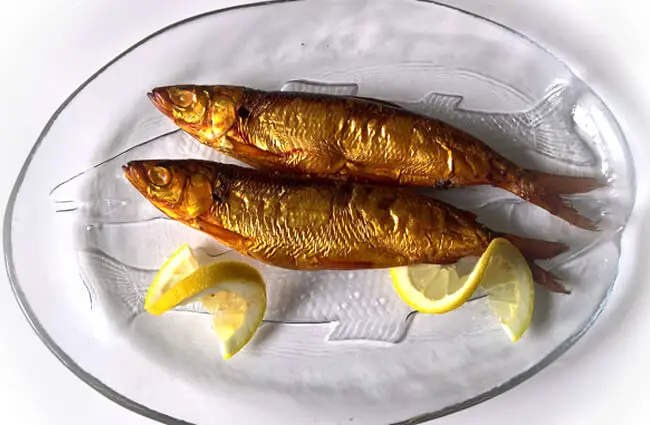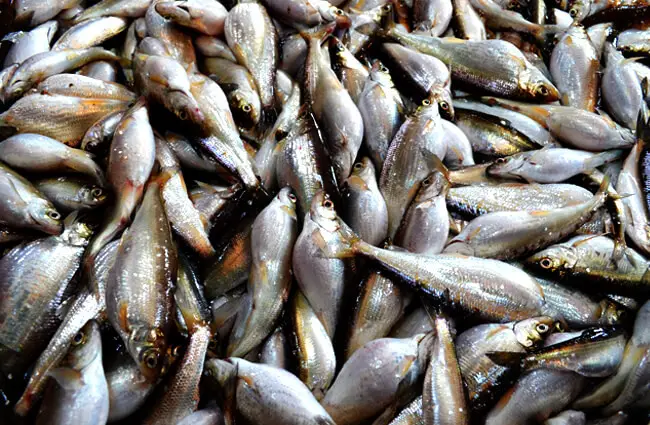People refer to a number of different fish as “Whitefish.” However, for our purposes, we will focus on the group of fish in the Coregoninae subfamily.
These fishes, close relatives of the salmon, trout, and char, live primarily in freshwater habitats. Researchers currently recognize at least 68 different species in this group. Read on to learn about the Whitefish.
Description of the Whitefish
Each species in this group is slightly different from the next. However, as a whole they generally have the typical “fish” appearance with an elongated torpedo-like body shape. Most have light colored silvery scales. They vary greatly in size and weight based on the species, though most measure about a foot or so in length.
Interesting Facts About the Whitefish
People utilize a number of different species in this group. Learn what makes a few specific species unique, below.
- Bloater – You can find this little fish throughout much of the Great Lakes of North America. However, these once-common fish have been declining in numbers, leaving them classified as Vulnerable. Their primary threat are invasive sea lamprey and alewife.
- Cisco – This species is another that inhabits the Great Lakes. Again, the presence of the aforementioned invasive species have pushed these fish to dangerously low population numbers. Once common in all of the Great Lakes, you can now only readily find this fish in Lake Superior.
- Lake Whitefish – Another Great Lake species, this fish is important to commercial fishermen. In fact, when you purchase “Whitefish” in grocery stores, this is typically the species you buy. However, this species also faces threat from the sea lamprey.
- Nelma – Another commercially important species, this fish lives in Arctic regions of Russia and North America. Inuit tribes of Alaska often rely on this species as a source of food.
Habitat of the Whitefish
Different species in this group prefer different habitat types. Some live their entire lives in freshwater habitats, while others have anadromous lifestyles.
Anadromous fish hatch and grow in freshwater, migrate to the ocean in their adulthood, and reproduce in freshwater. You can find various species in lakes, rivers, streams, creeks, and coastal seas.
Distribution of the Whitefish
Each of the various species has its own unique range and distribution. Some species live across vast distances while others occupy a single river system or lake. The populations of some species overlap with those of other species as well. You can find the different species across waterways in the Northern Hemisphere.
Diet of the Whitefish
The different species in this group have different diets. Individual species also eat different things based on their age and size. Younger fish prey on plankton and other microorganisms, like small shrimp and insect larvae. Adults also eat microorganisms, but typically hunt for small fish, insects, clams, snails, and other small prey.
Whitefish and Human Interaction
Humans utilize several different species in this group for food. Fishermen catch them both commercially and recreationally. However, people have over-fished some species in this group.
Additionally, habitat destruction, pollution, and the introduction of invasive species have resulted in decline in some populations. Each species is impacted by human activity differently.
Domestication
Humans have not domesticated these fish in any way.
Does the Whitefish Make a Good Pet
No, these fish do not make good pets. Additionally, people do not generally keep these fish as pets.
Whitefish Care
Some aquariums house these fish in their collections. However, they keep only a few species, which they often house with several other types of fish. Most facilities keep schools of these fish in large groups, feeding them small fish, mysid shrimp, crustaceans, mollusks, and more.
Behavior of the Whitefish
The behavior of each species varies from the others. Most species have social behavior and live in schools. Some schools feed during the day, and some feed at night. In many species, the fish rest in cold deep waters, and move up the water column to forage for food I warmer waters.
Reproduction of the Whitefish
Reproductive behavior also varies based on the species. Egg production, courting behavior, and incubation rates vary based on the species. However, all species breed via spawning. While spawning, the females release their eggs, and the males fertilize them outside of the body. Larger females typically produce larger clutches of eggs.













![Red Angus Closeup of a beautiful Red Angus cowPhoto by: U.S. Department of Agriculture [pubic domain]https://creativecommons.org/licenses/by/2.0/](https://animals.net/wp-content/uploads/2020/03/Red-Angus-4-238x178.jpg)












![Red Angus Closeup of a beautiful Red Angus cowPhoto by: U.S. Department of Agriculture [pubic domain]https://creativecommons.org/licenses/by/2.0/](https://animals.net/wp-content/uploads/2020/03/Red-Angus-4-100x75.jpg)

